|
Island Hopping
By Skip Hutchison

Actually, the term "Island Hopping" isn't the most accurate one you could use to describe what I am talking about. While you certainly could hunt a chain of islands, moving from one to another, I am talking about hunting birds from a boat that are not on shore. "Mat Hopping" is a more fitting term for this type of snipe shooting.
The mats I am referring to are small and offer cover to resting or feeding snipe. The ones I have always shot snipe around are floating although they could also be places where the lake or river bottom rises above the surface of the water. I don't know whether the birds are out there feeding or just resting but I do know that when hunting pressure on land is heavy birds will often seek these offshore places for refuge. When the birds are either flushing wild from the shoreline or have disappeared altogether my first plan of action is hitting the islands. Another time when hunting mats for snipe can pay off is when water levels are very high. For several years during the mid 90's we had high water levels at all of my regular hunting places. Following a very poor 1994-95 snipe season I resorted to island hopping. During the 1995-96 season every snipe I shot was taken while using a small boat to sneak up on floating mats and shooting as the birds flushed. This is somewhat similar to the way many snipe are taken as incidentals by duck hunters in my area. They might not be trying to sneak up on snipe but they use the mats and the concealment the vegetation offers as natural blinds. It is the snipe moving from one mat to another that end up at the one they are using for a blind that subsequently end up in their game bag.
These are some typical floating mats that I am currently finding birds on. You can see that they vary somewhat in the height and density of cover. The denser the cover is the fewer birds I tend to find on them. I'm sure it is because it limits their ability to spot potential trouble. Unfortunately, on the mats with sparse vegetation that most of the birds prefer they are far less approachable. Even a small island like one of these first two below can easily hold a handful of birds.

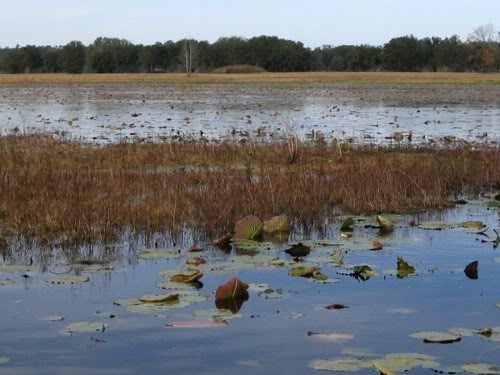
On larger mats or where there is more than one mat there can be quite a few birds congregated. I have put up as many as three dozen on the mat pictured below. When the first bird is shot at most or all of the other birds often flush. It can be complete mayhem for a few seconds and what usually happens is birds end up flushing closer to the hunter than the one just shot at, leaving him with nothing to do but watch with his now empty gun. After the birds have flushed you can stay at a mat and wait for the birds to return but I don't do that nor do I recommend it. I try and make it a rule to only shoot at birds flushing and not birds returning whether on land, in a boat, or anywhere else. In my experience hunting that way will keep the birds around much longer. Pass shooting or shooting snipe coming back in will run them out of the area about as quick as anything. I hit an island no more than once per trip and even on a large one holding many birds I take no more than two. You can beat a good spot to death in one day or have good shooting for an entire season depending on how you manage it.
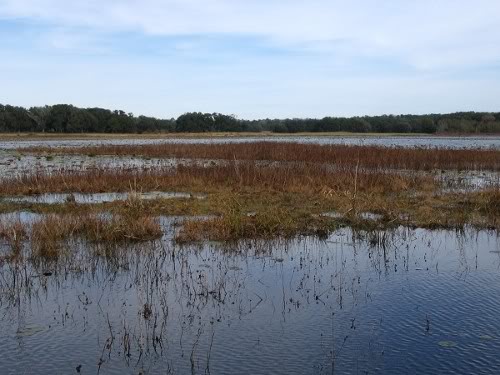
Some mats will have just a small area that is open enough for a snipe to consider using. Either scouting before the season or on the first trip will give you an idea of the layout of all potential hotspots and how you can best sneak up to them. It goes without saying that this one should be approached from the left, taking as much advantage of the grass as possible. If I approached it from the direction that I took the picture from I would be doing little more than birdwatching. The snipe I hunt aren't dumb enough to let something they can see get within gun range when they are sitting in a spot that is totally devoid of cover.
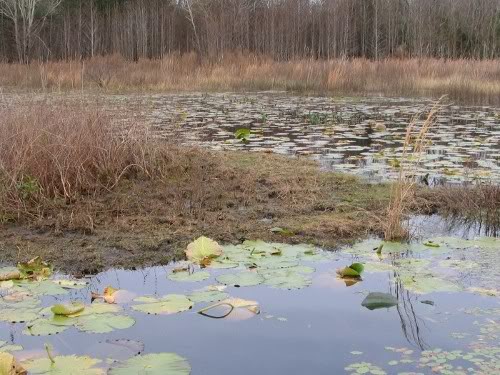
Some mats won't have one direction of approach that offers more or less concealment than any other. In that case you want to remember after a few visits where birds tend to be most often. If I find that they prefer one side over the others, even for no apparent reason, I will approach it from the opposite side whenever possible.

Most of the mats I hunt don't look as solid up close as they do from a distance. Still, they are too thick to run a boat on without getting stuck. On the other hand, if I tried to step on most of them I would go right through. Being in cold water that is over my head in the middle of winter isn't someplace I am going to end up and you don't want to either. Stay off the islands. Nothing, even a downed bird, is worth either of our lives. That brings up something else that must be taken into consideration. Don't shoot a bird over the mat. Let is get clear and out over open water. I would hate to leave a bird that I could see but not get to and I know you would too.
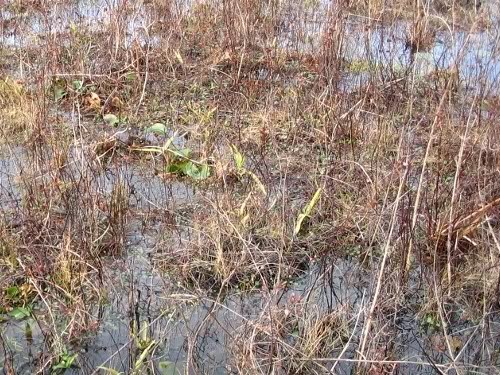
You might also need to consider another safety precaution depending on where you live. Both cottonmouths and alligators like to sun themselves and while I don't consider either to be a threat when I am in a boat there is the potential for either or both to be using the same mats as the snipe. As long as you don't try and get out on a floating mat, and we've already determined that you shouldn't, there won't be any incidents. I run into guys like these all the time and we don't seem to have any problem treating each other with respect. They will often leave the mat but if the water is cold they don't really want to. I would prefer that they stay on the mat. That will insure that they don't end up getting a bird that has been knocked down and is floating in the water.
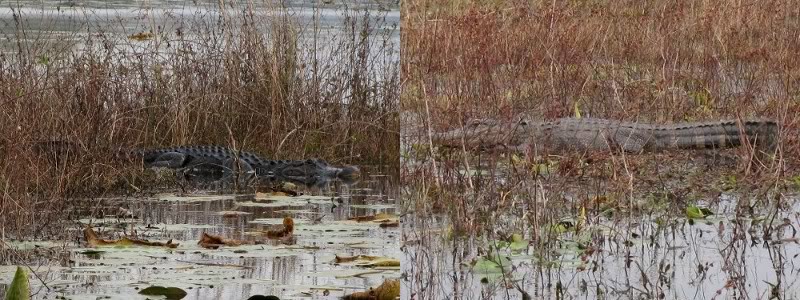
Alright, that should about cover jump shooting snipe from small islands or floating mats of vegetation. When the conditions are poor on the shore of your favorite lake, stream, or field you might consider giving island hopping a try. You might like it so much that you give up shooting snipe on land altogether.

God Bless America!
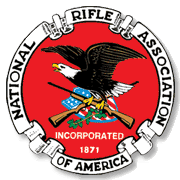
We proudly support the NRA
Copyright 2001-2025 The Snipe Hunter
|


